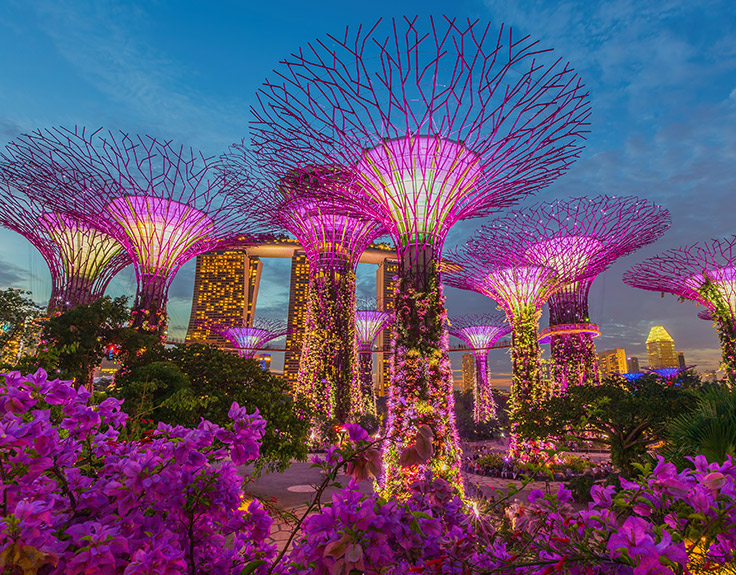Marina Bay Singapore
Located in the central area of Singapore sits Marina Bay, an impressive example of how land reclamation can look. In 1988 the vision for the bay was presented to the public in a two-week exhibition showcasing how this project was going to put Singapore on the map. What then followed was a multi-billion dollar venture. Architectural masterpieces now dot the waterfront, Supertrees nestle amongst hectares of pristine greenery in Gardens by the Bay, and the world’s largest infinity pool floats atop the Marina Bay Sands hotel.
Marina Bay Sands hotel
Standing proud in the Bayfront area is the Marina Bay Sands hotel, design by Moshe Safdie architects and opened in 2010. An iconic section of the Singapore skyline, the resort boasts a 2561-room hotel, 1,300,000 sq. ft. convention exhibition centre, The Shoppes at Marina Bay Sands mall, a museum, two large theatres, celebrity chef restaurants, two floating crystal pavilions, art-science exhibits, the world’s largest atrium casino and a 490ft infinity pool. All of the above amounts to the world’s most expensive standalone casino property, costing an eye watering $8 billion.
The SkyPark
Swim on top of the world. Literally. The world’s largest, and possibly most spectacular infinity pool sits 57 floors atop of the Marina Bay Sands hotel, and offers the most majestic panoramic views of the city. The perfect spot for selfie taking in Singapore. The SkyPark’s unique structure overhangs the north tower by a stretch, giving the feeling of being suspended in the air. The SkyPark infinity pool holds an impressive 1423314.83 litres of water.
Other interesting facts about Marina Bay in Singapore
- In 2005 the Urban Redevelopment Authority spent $400,000 on a branding exercise to rename the Marina Bay area, only to stick with its original name
- The Marina Bay Sands is home to Waku Ghin, the most expensive restaurant in Singapore – a $1,000 per head bill is not uncommon here
- Marina Bay Sands and Resorts World Sentosa together, it has been claimed, contribute 1.5-2% to Singapore’s GDP






